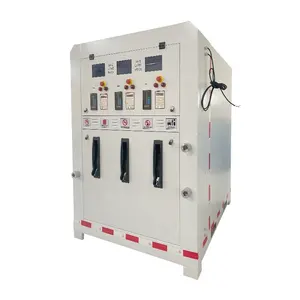
1000/2000/3000 Liters Portable Micro Gas Station Mini Mobile Fuel Station Tank and Dispenser for Philippine

Portable Gas Fuel Station Container Station Portable petrol station Fuel Dispenser with 3 nozzle 3000 Tank
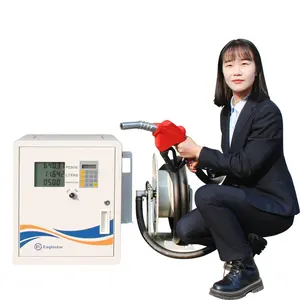



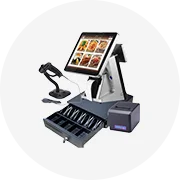
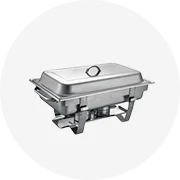
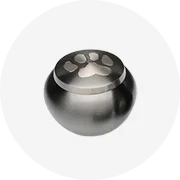



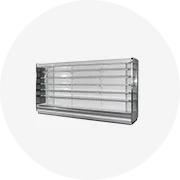
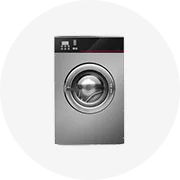

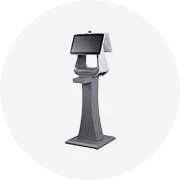


In an era where efficiency and mobility are paramount, portable fuel dispensers are emerging as game-changers in field operations. From construction sites to remote agricultural lands, the need for accessible refueling solutions has never been more critical. This article delves into the evolution of fuel dispensers, from their early mechanical iterations to today's advanced portable models. We explore how these devices are not only revolutionizing the way fuel is delivered across various industries but also enhancing operational efficiency, safety, and environmental compliance. Join us as we uncover the transformative impact of portable fuel dispensers and their growing significance in our fast-paced world.
The concept of fuel dispensers has evolved significantly since their inception at the end of the 19th century. Initially, refueling was a cumbersome and hazardous task, often involving manual pumps or the direct pouring of fuel, which was time-consuming and required considerable manpower. To address these challenges, the development of automatic fuel dispensers began, marking a significant milestone in the history of fuel management systems.
The early 20th century saw the introduction of the first mechanical fuel dispensers, which, despite their convenience compared to previous methods, were criticized for their complex operation and susceptibility to damage. As technology advanced, the 1940s brought about automated fuel dispensers that utilized electronic technology to control oil flow and measure volume, enhancing the efficiency of the refueling process.
Subsequent decades witnessed further advancements, with fuel dispensers incorporating heating systems in the 1960s to prevent fuel freezing in cold weather, and the integration of identification chips in the 1980s to facilitate personalized services. The turn of the millennium saw the adoption of wireless technology, streamlining data transmission and customer interactions.
These historical advancements set the stage for the emergence of portable fuel dispensers, which are designed to meet the dynamic needs of modern field operations. They embody the progress from manual to automated refueling solutions, paving the way for more intelligent, safe, and environmentally friendly fuel dispensing equipment.

Portable fuel dispensers are innovative devices designed for the efficient and accurate delivery of various fuels. These dispensers are equipped with microcomputer control systems that allow for customizable programming, enabling the use of multiple operational modes. Users can initiate these modes via a button or remote control, enhancing the flexibility of the device. The dispensers are capable of handling a range of fluids, including diesel, kerosene, and various oils, making them suitable for a variety of industrial applications.
The design of portable fuel dispensers includes a durable and energy-efficient vacuum pump, ensuring reliable operation and longevity. These units are lightweight, compact, and easy to install, which contributes to their portability. Technical specifications of these dispensers vary, with adjustable flow rates typically ranging from 20 to 100 liters per minute. They can operate with different power supplies, and feature suction capabilities that adapt to various operational needs. The accuracy of these dispensers is within a margin of 0.001 liters, demonstrating their precision in fuel measurement.
The construction of portable fuel dispensers often involves high-quality materials, which provides resilience against wear and the elements. The compact size, usually around 400 * 300 * 300 mm, and the light weight of approximately 10 kilograms, make these dispensers easy to transport and use in diverse settings. They are designed to maintain a maximum working pressure of 5 kg, ensuring safe operation across different environments. These dispensers can be further customized to meet specific customer requirements, enhancing their utility in field operations.
The Alibaba platform showcases a diverse range of portable fuel dispensers, catering to various needs and applications. Among the offerings, you can find reliable performance models for fuel dispensing. There are also specialized options designed for use in specific markets, and versatile portable electric oil siphon pumps, which operate on a rechargeable battery, suitable for transferring different types of liquids including oil and diesel.
For operations requiring high mobility, the portable mini fuel pump with a hose reel is an ideal solution, ensuring fuel availability during transportation. Electric fuel transfer pumps are available for those seeking an electric pump unit for efficient fuel transfer. Additionally, the market offers portable dispensers that include lubricators and are suitable for gas stations.
For field operations, the portable fuel transfer pump and the 12 volt diesel fuel pump set stand out for their portability and ease of use. The durable stainless steel portable diesel fuel pump represents a durable option, while high flow rate models offer significant performance in a compact size. For more specialized needs, the market includes portable electric barrel pumps and a line of submersible sinking pumps, demonstrating the breadth of portable fuel dispensing solutions available.

Portable fuel dispensers have become an integral tool for a variety of field operations due to their versatility and convenience. These devices are designed to meet the needs of on-the-go refueling in environments such as construction sites, agricultural fields, and remote locations where traditional fueling stations are not accessible. The adaptability of portable fuel dispensers allows for the efficient distribution of diesel, kerosene, and various oils, including edible oils, lubricating oils, and cutting oils. Their use extends to applications involving fluids that are not highly corrosive, ensuring a broad range of serviceability. The design of these dispensers incorporates features that enable precise measurement and controlled dispensing, which is crucial for managing resources effectively in field operations. The mobility of these units ensures that fueling can be carried out accurately at any time, enhancing operational efficiency and productivity in diverse working conditions.
Modern portable fuel dispensers are equipped with state-of-the-art technology to enhance the refueling process. These dispensers offer contactless payment options, including mobile payment solutions and app-based refueling, allowing for transactions that are both quick and secure.
The integration of the Internet of Things (IoT) into fuel dispenser systems enables remote monitoring and predictive maintenance. This technological advancement allows station owners to monitor equipment performance and receive maintenance alerts, minimizing downtime and ensuring consistent service.
Safety features are a critical aspect of current fuel dispenser technology. Emergency shutoff systems and tamper-proof designs are implemented to ensure customer safety and maintain the integrity of the fueling process. Compliance with industry safety standards is rigorously upheld.
User experience is significantly improved through user-friendly interfaces, high-resolution displays, and intuitive controls. These features contribute to a more efficient and pleasant refueling experience.
Looking forward, the fuel dispenser industry is set to integrate further innovations such as biometric authentication and enhanced data analytics, paving the way for a more efficient and sustainable future in fuel dispensing technology.
The construction of gas station canopies involves critical material considerations to ensure safety and durability. The primary material used in these structures is steel, selected for its strength and resilience. Steel's lightweight yet robust nature makes it ideal for creating frameworks that must withstand significant environmental stresses, such as high winds and seismic activity. In the context of gas stations, where the risk of fire is heightened, the choice of material is paramount. The steel framework not only provides the necessary support but also contributes to the overall safety, reducing the risk of fire spreading. Furthermore, the environmental impact of these materials is a consideration; steel is recyclable, aligning with eco-friendly practices. The design of gas station structures takes into account these material properties to ensure a balance between safety, functionality, and environmental responsibility.

Portable fuel dispensers, such as mobile bowsers, offer significant advantages for on-demand fuel delivery. These units are designed with safety and precision in mind, featuring vibration-proof and double-walled stainless-steel cabinets that enhance protection during transportation. Their compliance with safety standards ensures that fuel is delivered in a secure environment, which is crucial for maintaining safety and trust.
The accuracy of these dispensers is verified by Weights & Measures approvals, guaranteeing that the fuel dispensed is both precise and safe. This level of accuracy is essential for bulk users who need assurance of receiving the exact amount of fuel required for their operations.
Innovative features such as auto shut-off nozzles and automatic tank gauging contribute to the efficiency and safety of these systems. The auto shut-off nozzle prevents overfilling by automatically stopping the fuel flow once the receiving tank is full, while the tank gauging system monitors fuel levels over time, aiding in leak detection.
The use of compliant portable fuel dispensers is not only a legal requirement but also a quality assurance for customers, ensuring they receive the correct quantity of fuel. For dealers, investing in standard-compliant bowsers means being prepared for the growing demand in the 'fuel on-demand' industry, highlighting the importance of these dispensers in modern fuel delivery services.
Maintaining portable fuel dispensers is crucial for ensuring their longevity and safety. Regular cleaning of the fuel nozzle is necessary to prevent blockages or to replace it if there's a fault. It's also important to routinely clean the filter screen to remove any debris that could impede fuel flow. Checking the overflow valve is another key step; if it cannot close due to foreign matter like broken shrapnel, it should be cleared to prevent continuous internal circulation of oil that hinders proper dispensing.
The solenoid valve, a critical component for controlling fuel flow, should be inspected if there's a failure to dispense fuel. This involves examining the control circuit, including the valve board and relay board, and ensuring the neutral line is connected correctly. Additionally, the valve's coil and membrane hole should be checked for faults. Monitoring the exhaust condition of the oil and gas separator's exhaust pipe can also help identify any leakage faults in the dispenser pipeline or bottom valve.
Frequent cleaning of the separator filter is advised to prevent clogging from debris and iron filings, which can cause slow dispensing or no dispensing at all. Ensuring the integrity of the oil pipeline is also vital; any serious damage can allow gas to enter and prevent the formation of a negative pressure, leading to dispensing failures. Lastly, checking and replacing any stuck or damaged one-way valves in the oil tank or pipeline is essential to maintain a functional fuel dispensing system.
When selecting the right portable fuel dispenser on Alibaba.com, consider the dispenser's capacity and compatibility with your fuel type. Look for units that offer a balance between storage volume and portability. Assess the flow rate, to ensure efficient fuel transfer. Choose dispensers with robust materials and design, such as those with durable hoses and high-performance pumping units, to withstand rigorous field operations. Prioritize safety by opting for models with features like automatic shut-off and flame-resistant construction. Additionally, consider the power requirements, whether it's a 12V, 24V, or 220V dispenser, to match your site's power supply. The dispenser's user interface should be intuitive, with clear displays for ease of operation. Lastly, for environmental compliance and efficiency, consider dispensers designed for specific fuels like urea Adblue or LPG, ensuring they meet the necessary standards for those fuel types.
Portable fuel dispensers represent a significant leap forward in the realm of on-demand fuel delivery. Their compact design, advanced technological features, and robust construction cater to the dynamic needs of modern field operations. With the ability to handle a variety of fuels and fluids with precision and ease, these dispensers are indispensable tools for industries requiring reliable and efficient fuel access in diverse environments. Safety, a paramount concern, is addressed through meticulous design and compliance with international standards. As we have seen, the market offers an array of options to suit different needs, from high-capacity models for bulk users to environmentally compliant units for specialized fuels. In choosing the right dispenser, considerations of capacity, flow rate, material, safety, and power requirements are crucial. Ultimately, the adoption of portable fuel dispensers is a testament to the industry's commitment to innovation, safety, and customer satisfaction. As the demand for fuel on-the-go continues to rise, these dispensers stand ready to fuel the engines of progress with unmatched efficiency and reliability.